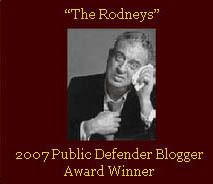Kafka-Brod and Arlt-Piglia
Todays' NY Times Magazine gives us this tidbit:
Which brings us to Ricardo Piglia's work, "Assumed Name," which tells the above story. And which presents a story claimed by Piglia to be written by Roberto Arlt. Apparently, the Arlt story was written by Piglia, but it's so cleverly done, and the story of the notes and outlines and sketches is so well put together, in fact, done in a fashion that Jorge Luis Borges himself would have loved, that Mrs. Arlt thought it was real. Was it? Does it matter?
The world is richer for Brod's disobedience of Kafka. And for Piglia's smashing whatever line there is between fact and fiction.
During his lifetime, Franz Kafka burned an estimated 90 percent of his work. After his death at age 41, in 1924, a letter was discovered in his desk in Prague, addressed to his friend Max Brod. “Dearest Max,” it began. “My last request: Everything I leave behind me . . . in the way of diaries, manuscripts, letters (my own and others’), sketches and so on, to be burned unread.” Less than two months later, Brod, disregarding Kafka’s request, signed an agreement to prepare a posthumous edition of Kafka’s unpublished novels. “The Trial” came out in 1925, followed by “The Castle” (1926) and “Amerika” (1927). In 1939, carrying a suitcase stuffed with Kafka’s papers, Brod set out for Palestine on the last train to leave Prague, five minutes before the Nazis closed the Czech border. Thanks largely to Brod’s efforts, Kafka’s slim, enigmatic corpus was gradually recognized as one of the great monuments of 20th-century literature.
The contents of Brod’s suitcase, meanwhile, became subject to more than 50 years of legal wrangling. While about two-thirds of the Kafka estate eventually found its way to Oxford’s Bodleian Library, the remainder — believed to comprise drawings, travel diaries, letters and drafts — stayed in Brod’s possession until his death in Israel in 1968, when it passed to his secretary and presumed lover, Esther Hoffe. After Hoffe’s death in late 2007, at age 101, the National Library of Israel challenged the legality of her will, which bequeaths the materials to her two septuagenarian daughters, Eva Hoffe and Ruth Wiesler. The library is claiming a right to the papers under the terms of Brod’s will. The case has dragged on for more than two years. If the court finds in the sisters’ favor, they will be free to follow Eva’s stated plan to sell some or all of the papers to the German Literature Archive in Marbach. They will also be free to keep whatever they don’t sell in their multiple Swiss and Israeli bank vaults and in the Tel Aviv apartment that Eva shares with an untold number of cats.
The situation has repeatedly been called Kafkaesque, reflecting, perhaps, the strangeness of the idea that Kafka can be anyone’s private property. Isn’t that what Brod demonstrated, when he disregarded Kafka’s last testament: that Kafka’s works weren’t even Kafka’s private property but, rather, belonged to humanity?
Which brings us to Ricardo Piglia's work, "Assumed Name," which tells the above story. And which presents a story claimed by Piglia to be written by Roberto Arlt. Apparently, the Arlt story was written by Piglia, but it's so cleverly done, and the story of the notes and outlines and sketches is so well put together, in fact, done in a fashion that Jorge Luis Borges himself would have loved, that Mrs. Arlt thought it was real. Was it? Does it matter?
The world is richer for Brod's disobedience of Kafka. And for Piglia's smashing whatever line there is between fact and fiction.
Etiquetas: franz kafka, max brod, Ricardo Piglia, roberto arlt








